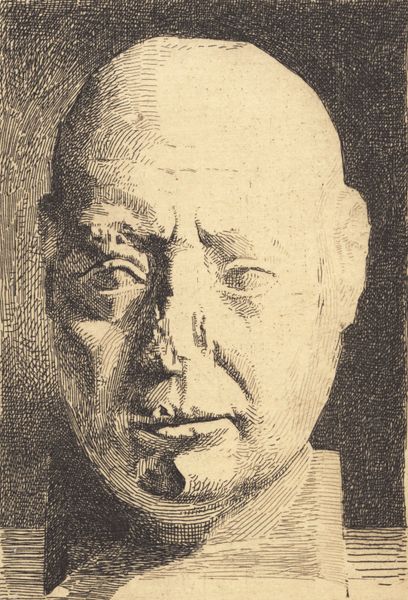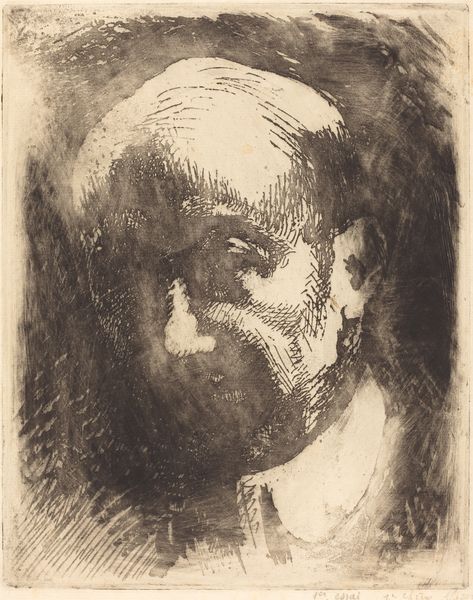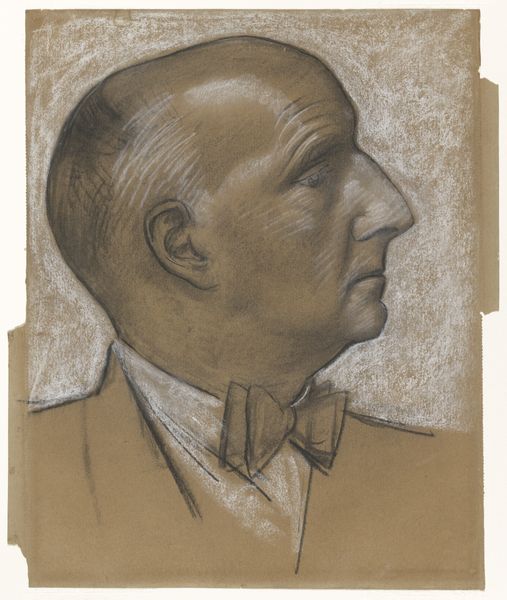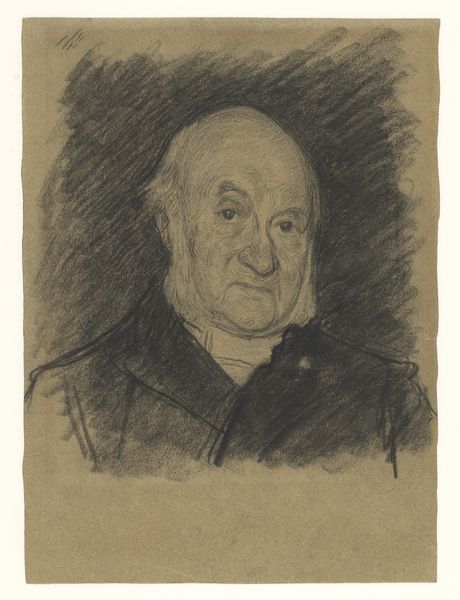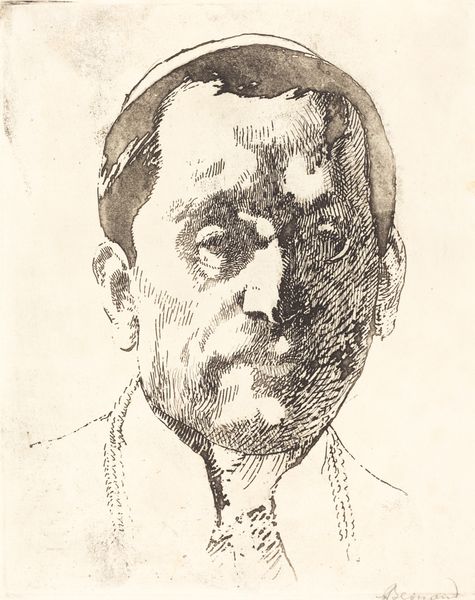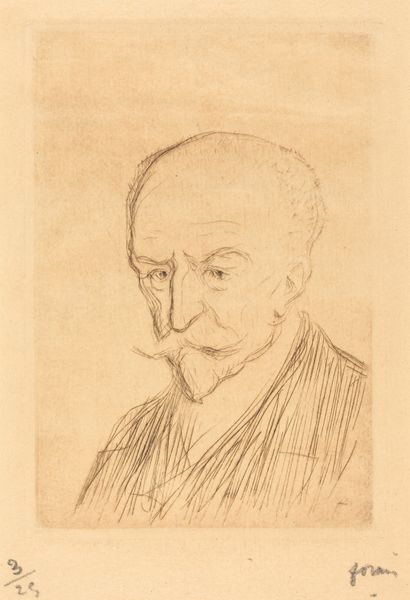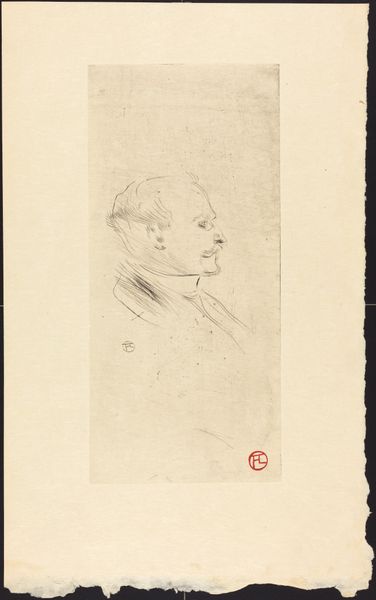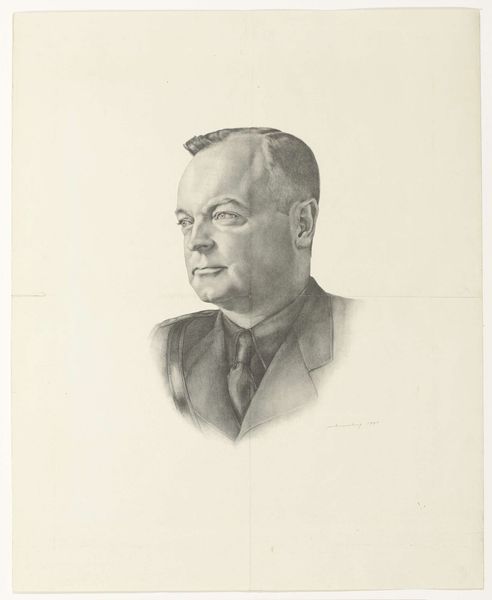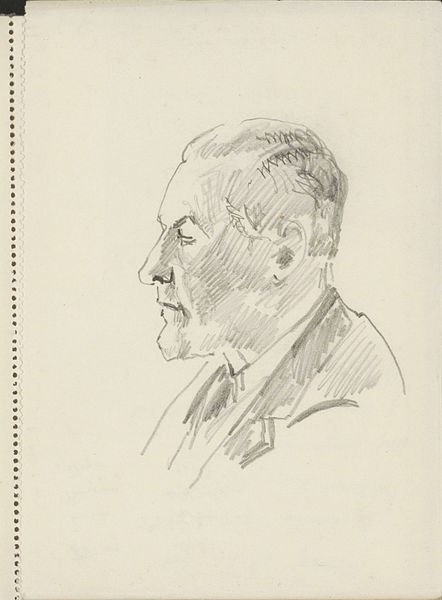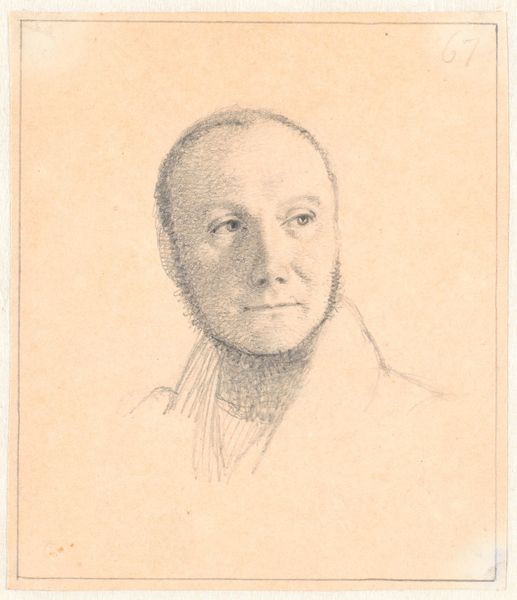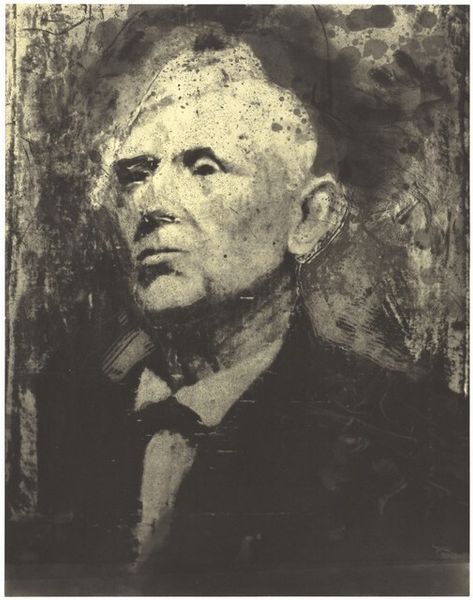
drawing, print, etching
#
portrait
#
drawing
# print
#
etching
#
charcoal drawing
#
portrait drawing
Dimensions: 98 mm (height) x 128 mm (width) (plademaal)
Curator: Here we have "Egyptian Head, after a plaster cast" etched by Frans Schwartz in 1897. Editor: Stark, isn’t it? That severe, unblinking gaze coupled with the almost brutal use of shadow gives the head a very imposing feel, despite being a relatively small print. Curator: Indeed. Prints such as this circulated widely at the turn of the century. Artistic and academic institutions employed prints to distribute classical ideals—serving as tools to perpetuate specific cultural values by making them visible and seemingly ‘universal’ to the population. The dissemination of art was a very powerful political act. Editor: You can see the process in the cross-hatching of the etching, building up tonal density to render the contours and texture. I'm drawn to the play of light on the smooth, bald head and the angular features, it is very successful given the restrictions of the medium. It creates such depth. Curator: Yes, and the choice of subject itself reinforces this distribution of power, since ancient Egyptian sculpture carried enormous prestige within Western academic circles at this time. Displaying such heads was about celebrating their status within the artistic canon, while at the same time visually educating and morally improving its viewership. Editor: What strikes me is the stark contrast between the delicate lines of the face and the areas plunged into almost complete darkness. It heightens the drama, but there is something not entirely perfect about the reproduction of the head that feels unsettling, it might be in the light, it's strangely contemporary in its abstraction. Curator: These types of reproductions provided access to artwork otherwise not accessible to the masses; this accessibility comes with an art-historical framing, but they also served to further cement already powerful cultural structures and ideas of prestige that very much informed European identity at the time. Editor: I’m intrigued by the process as well as the image, in other words, I appreciate Schwartz’s handling of line and tone—transforming an established sculptural form with the intrinsic quality of the artist’s work itself. Curator: Reflecting on its initial dissemination really shows how much this head embodies its period; revealing how objects can be agents in wider cultural discourses. Editor: From a formal point of view, I find the image striking for its tension, straddling historical reverence and its own, unique graphic language.
Comments
No comments
Be the first to comment and join the conversation on the ultimate creative platform.
